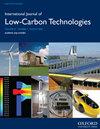Experimental investigation on flow condensation pressure drop of R134a inside the micro-fin tube at high mass flux
IF 2.3
4区 工程技术
Q3 ENERGY & FUELS
引用次数: 0
Abstract
To clarify the influencing mechanisms of the experimental condition and the tube structure on the pressure drop of heat transfer fluid, the two-phase flow condensation pressure drop of R134a inside the micro-fin tube was experimental studied at high mass flux, which is different from other conventional researches. The experimental result shows the pressure drop is proportional to mass flux and fin helical angle, and is inversely proportional to condensation temperature and coolant Reynolds number. Moreover, the experimental data of pressure drop was compared with the predicted value of some existing correlations for the micro-fin tube. It can be found that correlations of Cavallini et al, Han et al and Haraguchi et al show a good prediction effect with the mean relative deviation of 13.89%, 16.08% and -2.19%, respectively. Correlations of Pierre/0.053, Kedzierski et al and Choi et al all underestimate most of the experimental data of the pressure drop inside the tube, and their prediction deviations are greater than 10%. That is, the application effect of the separated flow model is better than that of the homogeneous flow model. Finally, the Kedzierski et al correlation was improved to realize a high-precision prediction of the fluid flow mechanism inside the tube. Because the prediction deviation of the improved correlation between the experimental value and the predicted value was greatly reduced, its prediction deviation is less than 10% for R134a and R410A, therefore, it can be say the improved correlation has a good predictive results for the pressure drop.高质量流量下R134a微翅片管内流动冷凝压降的实验研究
为了阐明实验条件和管结构对传热流体压降的影响机理,与其他常规研究不同,在高质量流量下对R134a在微翅片管内的两相流冷凝压降进行了实验研究。实验结果表明,压降与质量流量和翅片螺旋角成正比,与冷凝温度和冷却剂雷诺数成反比。此外,将微翅片管压降的实验数据与一些现有关联式的预测值进行了比较。可以发现,Cavallini等人、Han等人和Haraguchi等人的相关性显示出良好的预测效果,平均相对偏差分别为13.89%、16.08%和-2.19%。Pierre/0.053、Kedzierski等人和Choi等人的相关性都低估了管内压降的大部分实验数据,其预测偏差大于10%。也就是说,分离流模型的应用效果优于均匀流模型。最后,改进了Kedzierski等人的相关性,实现了对管内流体流动机制的高精度预测。由于实验值与预测值之间的改进相关性的预测偏差大大降低,其对R134a和R410A的预测偏差小于10%,因此,可以说改进相关性对压降具有良好的预测结果。
本文章由计算机程序翻译,如有差异,请以英文原文为准。
求助全文
约1分钟内获得全文
求助全文
来源期刊

International Journal of Low-carbon Technologies
Engineering-Architecture
CiteScore
4.30
自引率
4.30%
发文量
106
审稿时长
27 weeks
期刊介绍:
The International Journal of Low-Carbon Technologies is a quarterly publication concerned with the challenge of climate change and its effects on the built environment and sustainability. The Journal publishes original, quality research papers on issues of climate change, sustainable development and the built environment related to architecture, building services engineering, civil engineering, building engineering, urban design and other disciplines. It features in-depth articles, technical notes, review papers, book reviews and special issues devoted to international conferences. The journal encourages submissions related to interdisciplinary research in the built environment. The journal is available in paper and electronic formats. All articles are peer-reviewed by leading experts in the field.
 求助内容:
求助内容: 应助结果提醒方式:
应助结果提醒方式:


